5.2.4 6 × 6 Briefs
Amplify the Overlooked
The world is full of details that go unnoticed, but design can bring them into focus. This project invites you to identify something small, hidden, or overlooked—a physical detail, a system, or an everyday behaviour—and amplify its presence. Your goal is to celebrate or draw attention to something usually ignored, helping your audience see it differently. Think about how you can reveal your subject's beauty, complexity, or importance. Consider whether you want to elevate its significance, reframe its context, or make it more visible. The outcome should encourage the audience to pause and appreciate what they might otherwise miss.
Generative Design
Creations that evolve or vary based on rules, randomness, or audience input with the result being unique and unexpected outcomes. Generative design allows the designer to step back, setting up a system that produces results independently. These projects highlight the balance between control and unpredictability, often revealing patterns or relationships that emerge from the process itself.
Concept: "BLINK"
This project transforms the unnoticed act of blinking into a generative art experience. When the user enters the immersive experience, each blink will trigger visual outputs, amplifying the hidden rhythms of human behaviour and encouraging users to reflect on how much change can occur during those micro-moments of darkness.
Blinking is a nearly invisible and constant behaviour that shapes how we perceive the world. Despite occurring thousands of times a day, blinks go unnoticed, I want to explore what happens in those short intervals and amplify their significance by writing the concept for an interactive art display that alters/changes every time the viewer blinks.
Research
A YouTube video called “Why don’t you notice your Blinks” explores why humans are almost unaware of the function the main points covered were:
1. Brain Compensation: The brain actively compensates for the brief loss of visual input during blinks, maintaining a continuous perception of the environment.
2. Scientific Discovery: Researchers have investigated how the brain suppresses the awareness of blinks to ensure a seamless visual experience.
3. This exploration offers insight into the complexities of human perception and the brain's role in creating a cohesive experience of reality.
What I learnt from the video is that the brain has developed a system where it is trying to make you as comfortable as possible and to limit mental distractions. To achieve this, the brain has a neurological process that prevents the conscious detection of your blinks, to ensure a smoother living experience, which is an incredible phenomenon.
Researching screen-based eye trackers, the most suitable one I came across for this concept was -
“Tobii screen-based eye trackers detect blinks using eye openness data (eyelid tracking), unlike traditional methods based on data loss, which only indicate the presence, absence, or duration of blinks.”
Blinking Data
Duration:
· 300–400 milliseconds (0.3–0.4 seconds).
Frequency:
· 15–20 blinks per minute (1 blink every 3–4 seconds)
· 14,400–19,200 blinks per day (16 waking hours).
Factors Affecting Blinking:
· Age – Blink rate decreases with age.
· Gender – Women blink more than men (linked to hormones).
· Fatigue – Increased blinking due to dryness or tiredness.
· Screens/Reading – Decreased blinking (as low as 3–8 blinks per minute).
· Medical Conditions – Disorders like Parkinson’s lower blink rates (1–2 per minute).
Purpose:
· Lubricates and protects eyes by spreading tears and oils.
· Acts as a cognitive reset during thought processing.
Behavioural Patterns:
· Social Blinks – Used in nonverbal communication (nervousness, surprise).
· Group Synchronization – People may sync blinks during shared activities.
Components
Hardware
For this concept, there are a handful of components needed:
1. Eye tracking/detection technology can detect blinks in real-time.
2. Eye tracking mount – corresponding cables
3. Mac Computer
4. Projector/ Display monitors
5. Tape
Software
Processing software/Python - Processing and code
Tobi SDK —The Eye Tracking SDK is software for developers to make interactive games and applications that eye movements. It includes the Tobii Eye Tracking Engine, which helps developers implement eye-tracking functionality.
Processing
Code for Eye calibration - Using AI, I developed processing code for how the eye tracker detects the eye and calibrates it for more accurate blink detection before the experience begins.
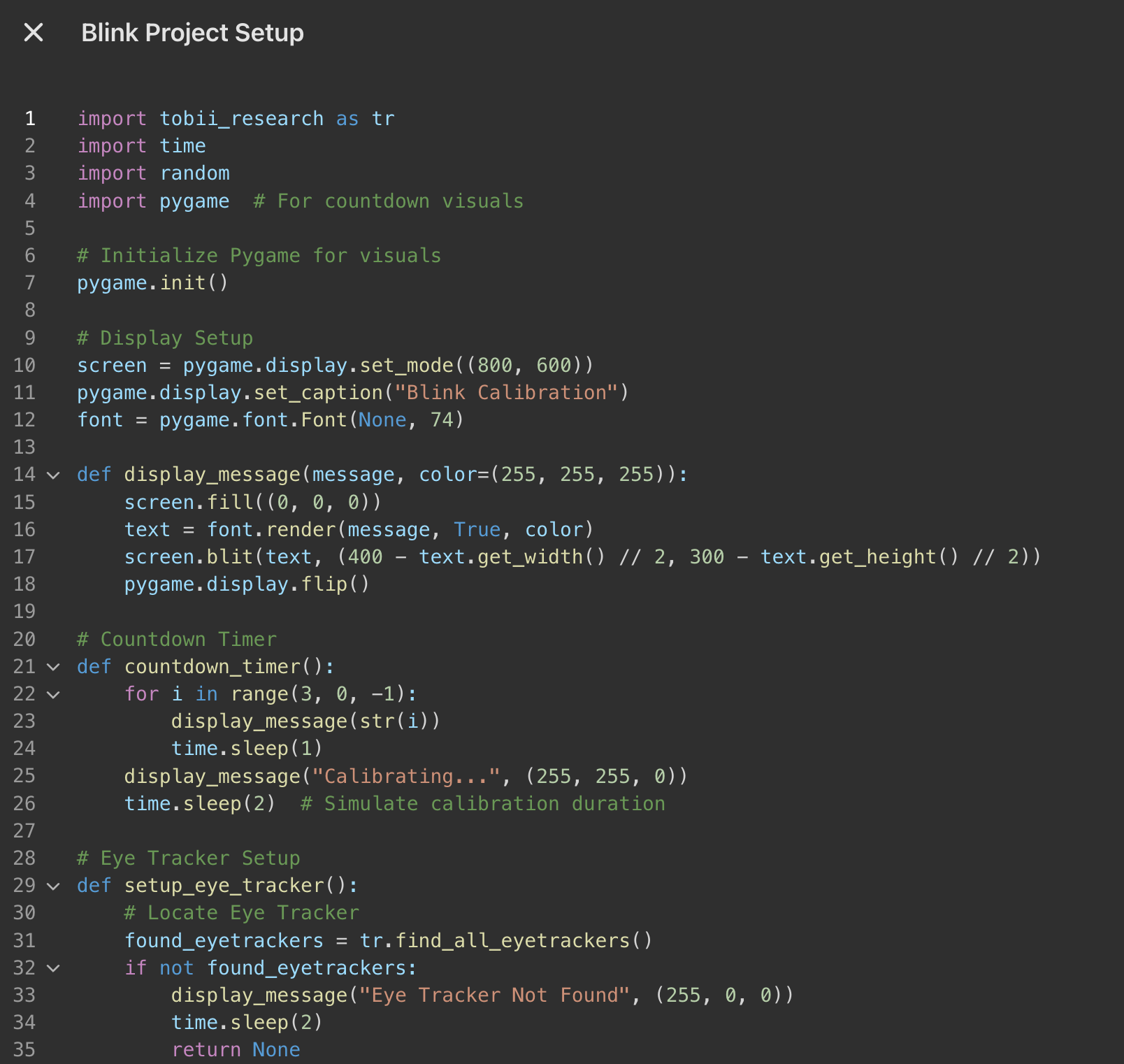
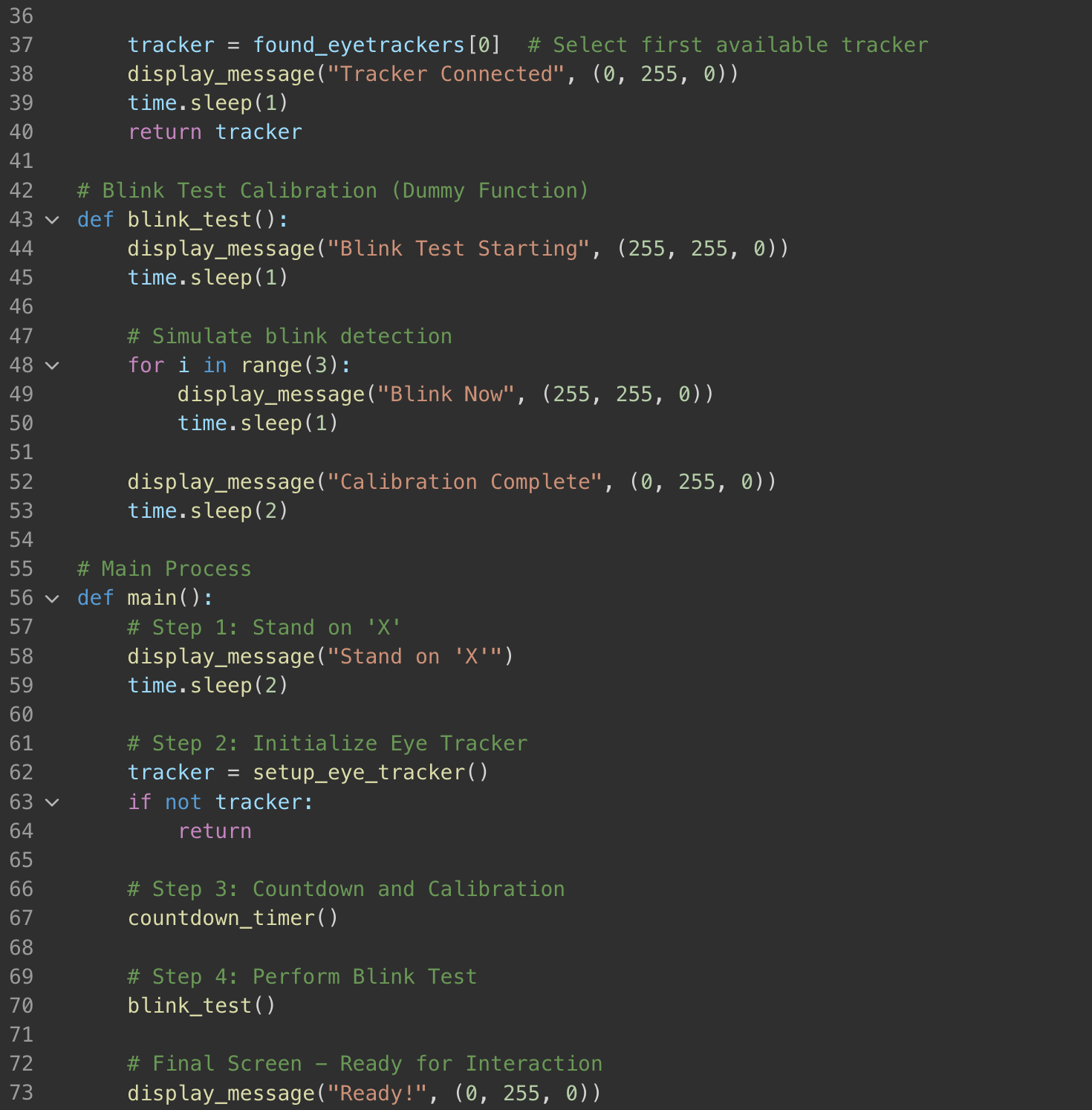
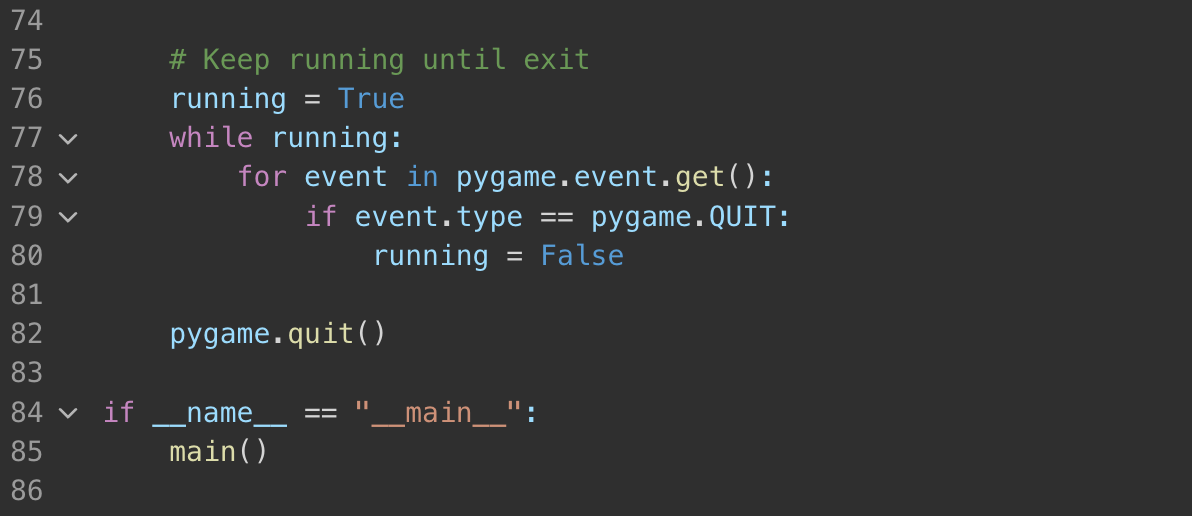
Calibrate the Eye Tracker:
To connect the Eye tracker to the computer, I would need to Install Tobii SDK, which will allow me to Input code which will run the process of detecting the blink, and then use that detection to generate a random image.
Tobii’s built-in calibration tool aligns with user eye positions before users perform tests to verify blink detection accuracy.
I used AI to create Python for my process.
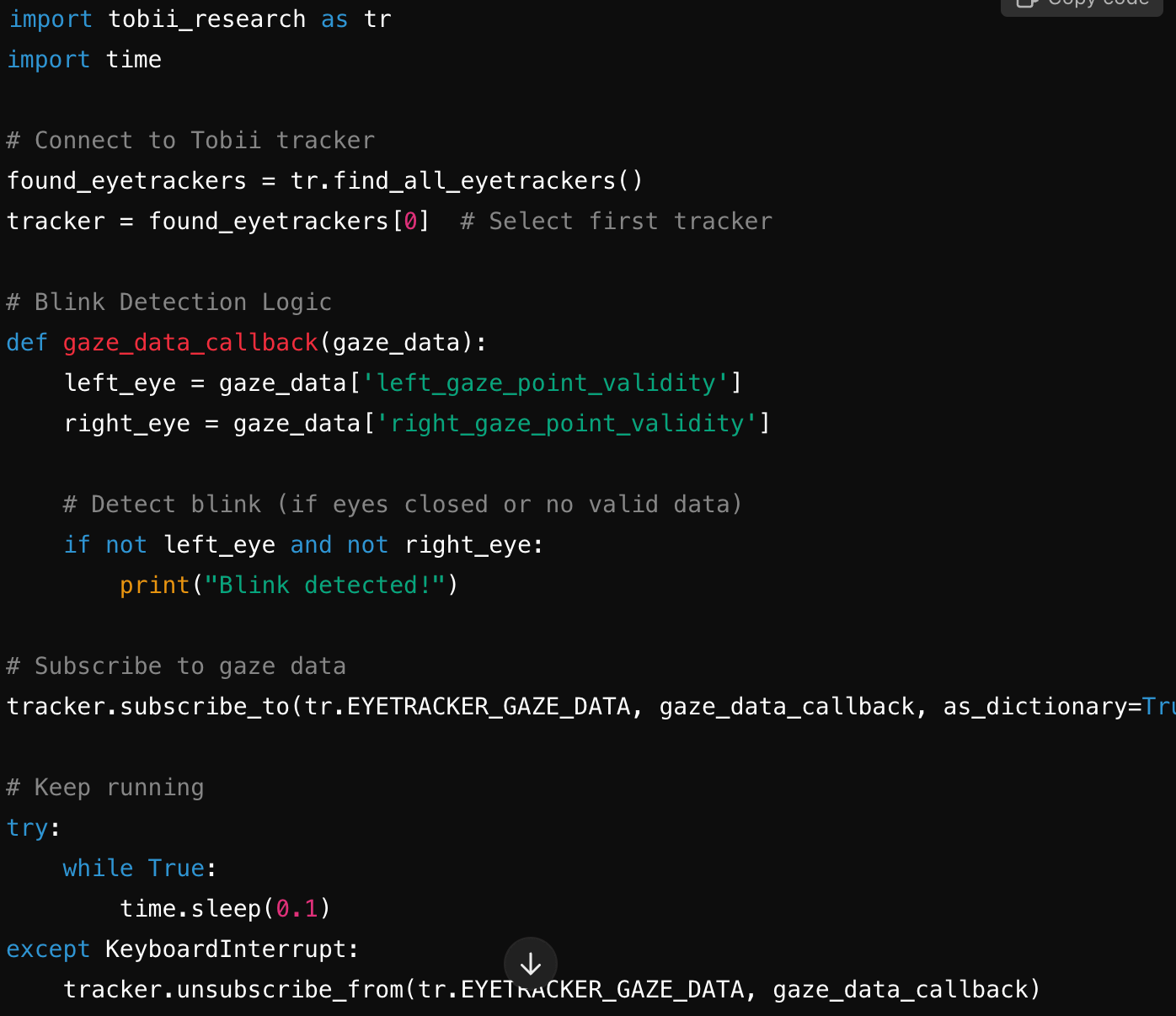
Generative Design Integration
1. Blink Frequency: Increase shape spread based on blink speed.
2. Blink Duration: Shape Size: Longer blinks create larger shapes
3. Random Patterns: Blink Input: Introduce random generative effects after each blink.
Again, here, I used AI to give me a processing code, which will allow this process to auto-generate itself.

Sketches
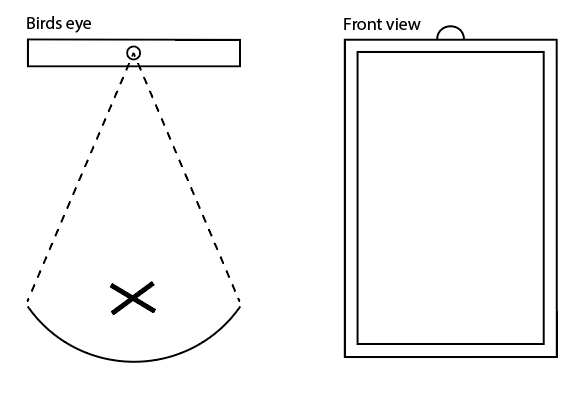
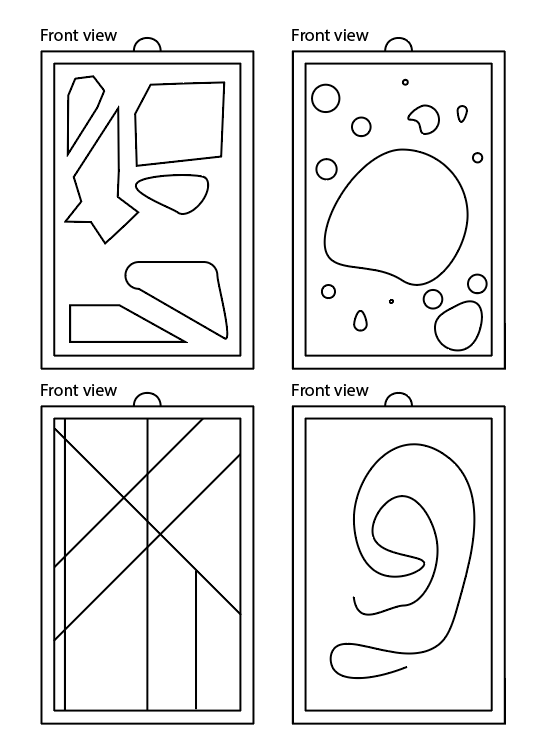
Conclusion
In conclusion, I believe that this concept project successfully amplifies the often-overlooked act of blinking, altering the way we perceive blinking through an interactive and generative art experience. Although rather alien to me my research into eye-tracking technology was very interesting, and the integration of the Tobii eye-tracking hardware and AI-driven software demonstrates how technology can enhance human interaction with art, making the invisible visible. This concept opens doors for future exploration, pushing the boundaries of interactive art and changing how we engage with the unnoticed details of daily life.
